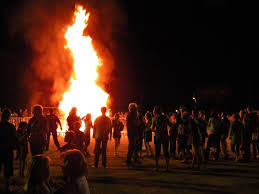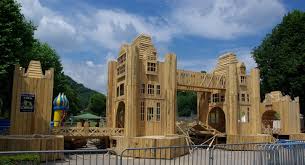This tradition exists over some European countries(France, Italie, Spain, Belgium....) and in Canada.
The origins
First, this tradition comes from a pagan celebration in Syria. The aim was to celebrate the summer solstice. the lit a big bonfire on. This celebration moved to Europe and Christians changed this event into a religious event. Later, this celebration stood in Paris at Place de Grèves whose the king lit the pyre on. Louis the XIVst was the last monarch to do this ritual.
How the festival was evolved ?

This event is organised at the 24th of June, the Jean-Baptiste day (Jean-Baptist was a prophet). The Saint-Jean celebration was traditionnaly the day of the youth. Games and ritual passage were given over the most of French parishes with the election of the king and the queen of the youth for the new year. In the evening, a big bonefire was lit and at the end of the evening, people danced.
Nowadays

As the 24th of June doesn't match every year on a Saturday, the celebration stands around this date on Saturday. The reason is all people can celebrate it because they are on weekend. On afternoon, they play with games for children and adults. When comes the evening, they gathered somewhere, where they can eat, drink waiting for the bonfire be lit. Shows are given: magicians, cheerleaders, orchestras... Around 10 o'clock pm, several persons light the bonfire. After that, people dance in a popular dancing.
Bonefire
In the past, young boys and girls, in the morning, they collected logs in order to build the pyre. Now, it is the festival committee of the village or of the city who is in charge of the pyre. You can find out different pyre, from the basic to the originalest.
 |
| A basic pyre |
 |
| A big pyre |
